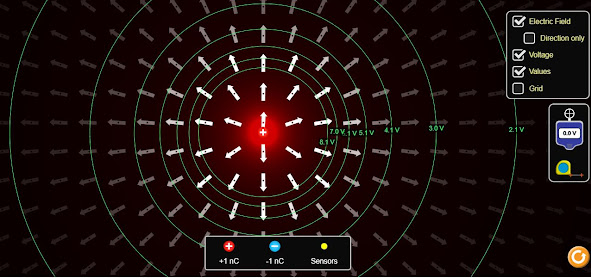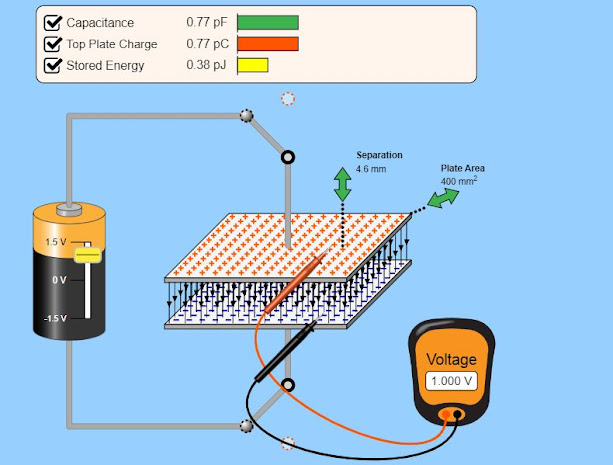Step-by-step
12P01 Electric Charges and Fields
How to solve Numerical problem in physics?
How
to solve Numerical problem in physics?
“Start walking. The path will become clearer”
·
Nature
is written in the language of Mathematics. Drawing is the language of Engineers
and Scientists.
·
Read
the question line by line converting it into a simple cartoon diagram or a
mathematical expression. Mark the numerical values in appropriate places in the
diagram or with the mathematical notations.
Charged Particle in a Uniform Electric Field. Calculate the vertical distance from the center line from where the particle will exit the parallel plate region.
One face of a rectangular glass plate 6 cm thick is silvered. An object held 8 cm in front of the first face forms an image 12 cm behind the silvered face. The refractive index of the glass is
One face of a rectangular glass plate 6 cm thick is silvered. An object held 8 cm in front of the first face forms an image 12 cm behind the silvered face. The refractive index of the glass is
A) 0.4 B) 0.8 C) 1.2 D) 1.6
12P02 Electric Potential and Capacitance
12P07 Alternating Current
In a double slit experiment two coherent beams have slightly different intensities I and $\delta I$. Show that the resultant intensity at the maxima is nearly 4I, while that at the minima is $(\delta I)^2/4I$
FAQs by parents for Physics Class
"Teacher does not teach.Student learns.Teacher just helps in the process of learning."
Frequently asked questions for Physics Class
Pure Si at 500 K has equal no. of electron (n_e) and hole (n_h) concentrations of 1.5 ×10^16 m^-3. Doping by Indium increases n_h to 4.5 ×10^22 m^-3. Find the no. of electrons in the doped semiconductor and identify if it is p-type or n-type.
NEET PYQ, 12P14 Semiconductor Materials and Devices, p-type n-type semiconductor
12P14 Semiconductor Study Notes
Quantity of water or liquid flowing out of a tank through a hole orifice at the bottom of the tank. Mathematical Modelling and Experimental Results.
Quantity of water or liquid flowing out of a tank through a hole orifice at the bottom of the tank. Mathematical Modelling and Experimental Results.
Application of Integration methods to model quantities that are changing continuously in a non-linear fashion with respect to time.
This work was started as a way to illustrate the power of calculus in mathematical modelling to class 11 and 12 students, when we deal with quantities that are not changing linearly with respect to time or other variable. However the integration methods look slightly complicated and may be suitable only for college level students and fluid mechanics students.
Mathematical Model PDF File
Excel Calculations and Graphs Excel File
What is the difference between Boiling and Evaporation? Gas and Vapour?
What is the difference between Boiling and Evaporation? Gas and Vapour?
R Kesavamurthi
IGNITING YOUNG MINDS (IYM)
9952419531
https://ignitingyoungminds.in
Qn1: What is difference between boiling and evaporation ?
Qn2: Why do we sprinkle water on the roof or open ground in summer?
Qn3: What is the difference between gas and vapour?
Why Soap Bubbles Liquid drops take spherical shape ? Surface Tension Experiments Soap film taking minimum area
11P09D Surface Tension / Mechanical Properties of Fluids
Why Soap Bubbles, Liquid Drops take Spherical Shape ? Soap Film taking minimum Area.
Surface Tension is one topic that is slightly difficult for the students. Simple home experiments can help to grasp the idea.
Students Shreya and Jagan Surface Tension Experiments
NCERT Exercise 3.15 An aircraft executes a horizontal loop of radius 1.00 km with a steady speed of 900 km/h. Compare its centripetal acceleration with the acceleration due to gravity. What is G Force?
Student John Paul Anto's Microwave Oven Experiment - Experimental verification of speed of Electromagnetic waves
If you have access to a microwave oven, see if you can do this simple 10 minutes experiment in your microwave.
1. Remove the turn table inside the oven
2. Place an uncooked Chappathi (Tortila) or similar flour item spread out
3. Switch on the oven for a nominal time ( may be 1 minute or 2 minutes as required)
4. Open the oven and look for any black spots where the heat is concentrated
5. Measure the distance between the black spots using a measuring scale (few cm expected)
6. In the instrument label in the back side of oven look for any frequency of microwaves used.
7. We are looking for the Speed of Microwave c = Frequency x Lambda, calculations from the above values obtained.
8. Any videos or pictures of the experiment will be very helpful for educational purpose may be to upload in youtube.
Microwave is an Electromagnetic wave. All EM waves such as light, radio wave, microwave, infrared wave, uv rays, x rays, gamma rays travel at the speed of light c = 3 x 108 m/s. This experiment is an attempt to experimentally verify the speed of microwaves.
 |
| Before Heating |
 |
| After Heating, approx.6 cm gap between black spots |
Student Swetha's Apparent Weight Experiments in Lift
11P04 Newton's Laws of Motion
Student Swetha's Apparent Weight Experiments in Lift
(Class 11 student 2023-24)
Actual reading before getting on the lift: 50 kg shown.
This is approx. 500 N due to gravity alone. Fg = mg = (50) (10) = 500 N.
Student Hashmitha's Double Slit Experiments YDSE
12P10 Wave Optics: Student Hashmitha's Experiments
(Class 12 student 2023-24)
Young's Double Slit Experiment YDSE: Small slits made in an aluminium foil and Laser light used here to get the bright and dark fringes.
12P12 Atoms
Basic Mathematical Formula for Physics Numerical Solving
I have given a small collection of basic maths topics that one has to study, who have not taken maths as one of the subjects. You may have to study with a maths teacher who is willing to teach you the basics. So that you can feel comfortable for your Physics numerical solving for your CBSE or State board exams and NEET / other entrance exams.
Mostly Algebra based problems can be tried and difficult trigonometry, log, exponential based problems can be skipped.
Remember this is just a guideline. If you do this short course around 30 hours, you may be able to overcome the fear of maths and feel confident for Physics problem solving.
11th Maths:
12th Maths:
------------------------------------------------------------------------------
What? Basic Mathematical Formula for Physics Numerical Solving
Why? While doing Physics Numerical Solving students struggle with basic Maths principle that has to be applied in the numericals. Especially topics such as Vector Multiplication, Basic Differentiation, Basic Integration etc. students need help.

















